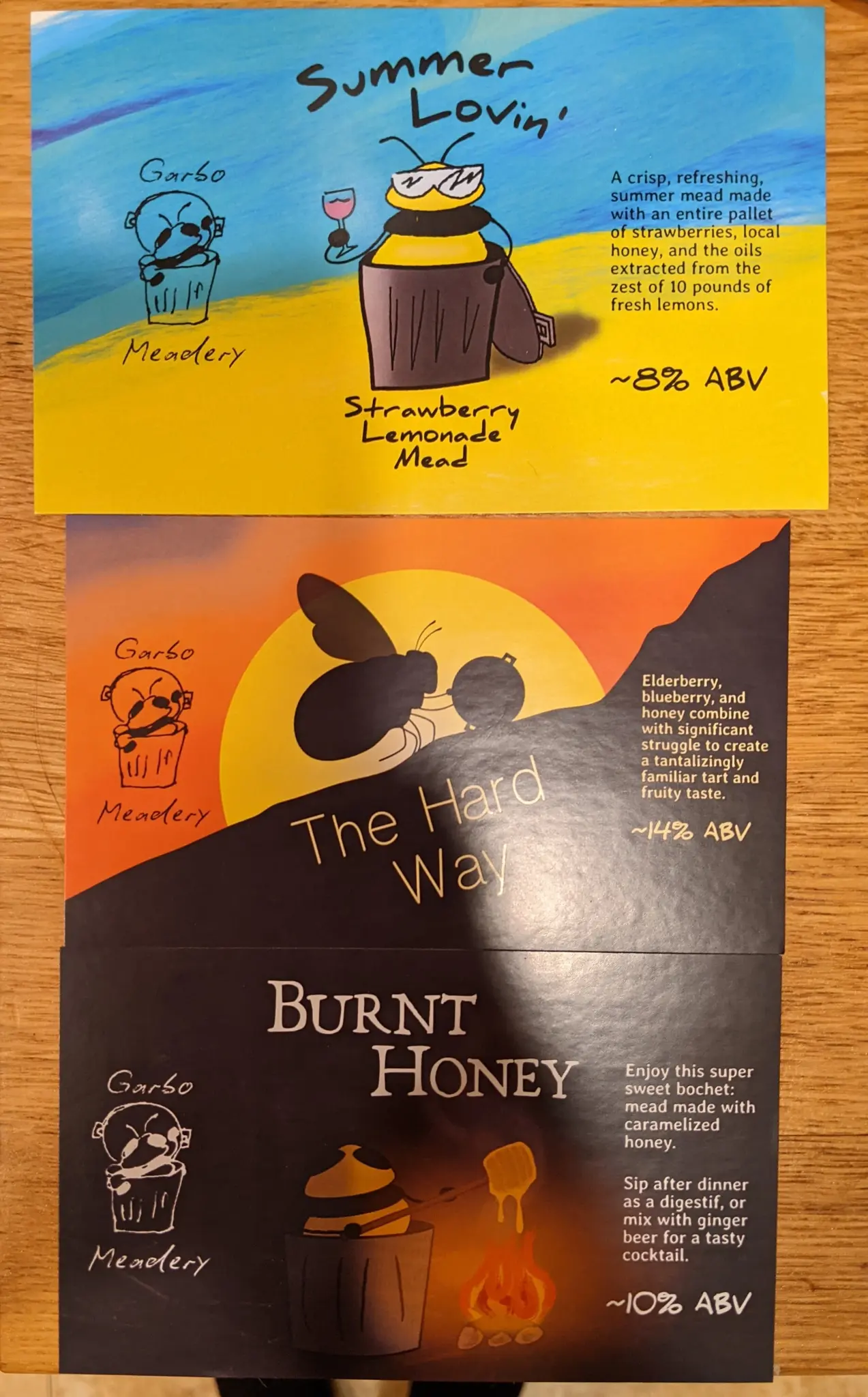We semi-recently got a corker which has let us move a bunch of our meads out of carboys and into bottles (and then boxes). It's extremely fun to be able to pull out a corked, labled bottle of mead at a gathering, just an extra bit of pizazz.
Details of the labels.

Burnt Honey: A bochet that's absolutely delicious, but a bit too sweet to drink a lot of. The yeast simply gave up partway through the fermentation (I assume due to the hilariously high SG) and rather than restart it we decided to lave it as is.
The Hard Way: Elderberry + Blueberry mead, nicely aged, lightly backsweetened, balanced with a bit of acid. Tastes shockingly similar to cranberry juice. Hence the name, a bunch of effort and a year of time to create something that you could get a similar end point to with cranberry juice and vodka. Still super nice to drink.
Summer Lovin': Fast turnaround mead made with fermenting juiced strawberries with the honey, then filtering immediately after primary, and backsweetening/flavoring with "oleo saccharum" and some citric acid. Extremely tasty, excellent summer drink, we liked it so much we've made two batches of it. Best part is that total time from start to bottle is under a month.
All of these were filtered using plate filters down to the "semi-filtration" level, which appears to be enough to stabilize them for back sweetening! My theory is that although the "semi-filtration" of about half a micron can't promise it removes all bacteria, yeast tends to be significantly larger and is removed without issue. At the very least we've had no bottle bombs yet.
To explain why there's a bee in a garbage can, "Garbo" was a combined last name me and my wife were throwing around as a possibility when we were getting married. The name was veto'ed, but we kept it as our "meadery" name, and since it brought to mind a little Garbage Bee that's what I doodled as our logo. It stuck as a theme after that.

Having recently tried the filtering thing, it's still a roll of the dice unless you're using the much more expensive professional grade filters.
It does get your mead clear as hell though, and removes a ton of off flavors.